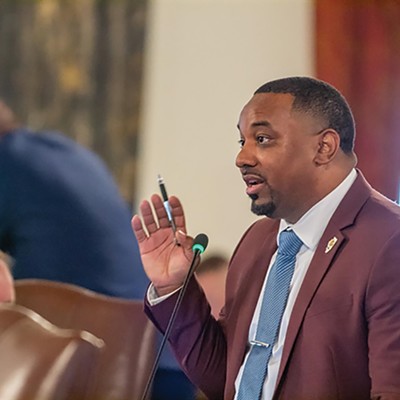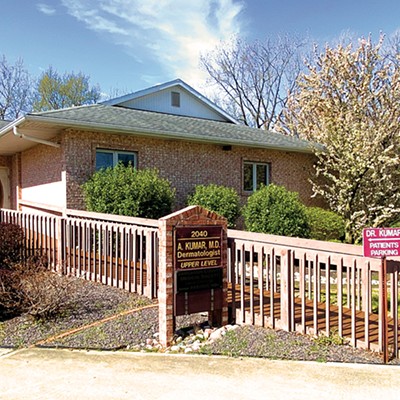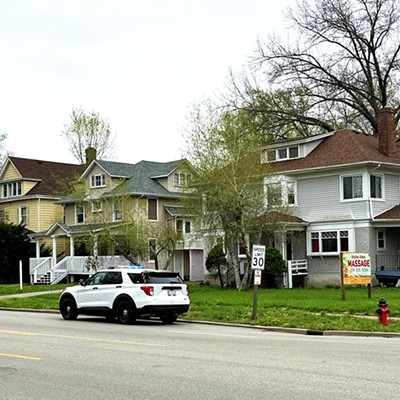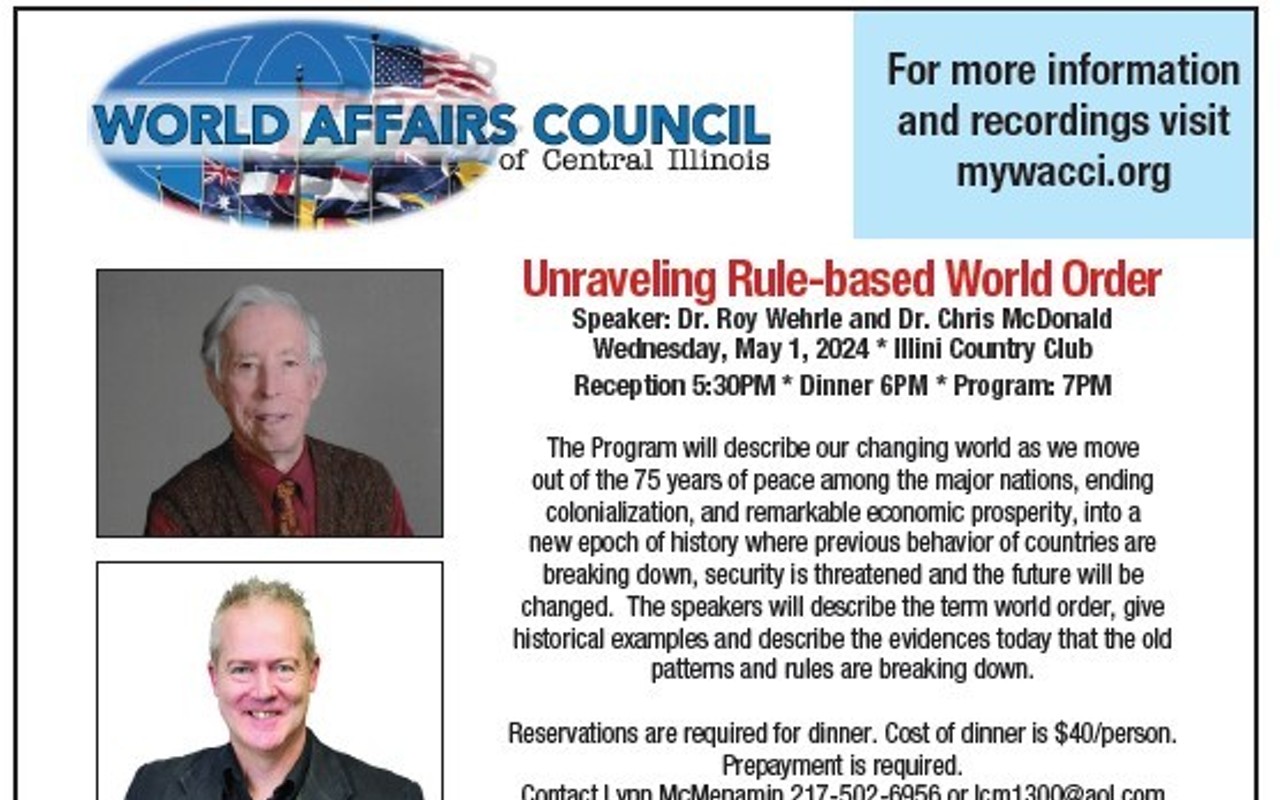A Nebraska company facing widespread resistance from property owners and environmentalists wants a third opportunity to win regulatory approval in Illinois for a carbon dioxide pipeline that would cross Sangamon County and inject liquid CO₂ from five Midwestern states under farmland in Christian and Montgomery counties.
Navigator Heartland Greenway LLC on Oct. 10 asked permission from the Illinois Commerce Commission to withdraw its application to build the proposed 290-plus miles of pipeline through all or parts of 14 counties, including Sangamon, Christian, Montgomery and Morgan.
The commission isn’t expected to rule on Navigator’s request until after Oct. 31.
ICC staff members were scheduled to conduct public hearings on Navigator’s pipeline application beginning Oct. 17, but those hearings were canceled after the company’s Oct. 10 filing with the ICC.
The entire underground pipeline would cost $3.4 billion and be the longest CO₂ pipeline in the world, extending for 1,350 miles through South Dakota, Iowa, Nebraska, Minnesota and Illinois.
Navigator, based in Omaha and with financial backing from BlackRock Inc., said in its filing that the company wants to “reassess the route and other aspects of the Heartland Greenway Pipeline System and the application.” The company asked for the option to refile at some point in the future.
The company didn’t say what prompted the reassessment, when it might refile or answer other questions. But Navigator said in its filing that the withdrawal request is “consistent with recent filings in other jurisdictions.”
The company didn’t name the other jurisdictions, but Navigator recently temporarily withdrew the regulatory application for its route through Iowa, and its application was turned down by South Dakota regulators in September.
“Being cognizant of ICC resources, Navigator will withdraw its current application with the intent to reinitiate Illinois permitting, if appropriate, when Navigator’s full evaluation is complete,” Navigator said in a written statement to Illinois Times.
The company initially filed its pipeline request in July 2022 and faced opposition from the public, including in Sangamon and Christian counties, when Navigator’s application included proposed CO₂ sequestration injection wells only in Christian County.
The company withdrew that application in January and filed an updated application in February that added a new 42-mile fork that extends south of Springfield, near Interstate 55, on its way to proposed sequestration sites in rural Montgomery County near Nokomis.
The pipeline largely would be funded through federal tax credits that 21 CO₂ producers such as ethanol and fertilizer plants along the pipeline would receive for reducing their CO₂ emissions. The plants would pay Navigator to ship the CO₂ to central Illinois for permanent storage.
The pipeline was billed by the company as a way of reducing climate-change-causing CO₂ while supporting the Midwest’s ethanol industry.
But opponents say they fear the pipeline, carrying pressurized and liquified CO₂ would pose an intolerable risk of injuring or killing people through asphyxiation if the pipeline ruptured and released a low-hanging plume of concentrated CO₂ gas.
Bill Lee, director of Sangamon County’s Office of Emergency Management, told regulators that Navigator’s plans to purchase equipment for emergency responders and otherwise protect the public are inadequate.
He said in written testimony submitted to the ICC in September that Navigator’s financial commitment was “limited to personal protective equipment and made no reference as to how Sangamon County’s first responders would travel to the plume with their combustion-dependent vehicles.”
“Without a commitment from NHG to purchase for Sangamon County a fleet of electric vehicles, NHG’s statements that they will provide personal protective equipment does essentially nothing for Sangamon County’s ability to respond” to a potential rupture of the 20-inch diameter pipeline, Lee said.
Opponents also fear the sequestered CO₂, injected more than a mile underground, eventually would leak into the atmosphere or poison groundwater supplies.
Landowners worried about the potential damage pipeline construction would cause to fertile croplands, though Navigator said it would reimburse landowners for reduced crop yields.
Fewer than 15% of Illinois landowners along the proposed route have signed easements that would pay them for the pipeline being able to cross their land, according to information Navigator filed with the ICC. For Sangamon County, the figure is 5%. For Christian and Montgomery counties, the figures are 2% and almost 4%, respectively.
The statistics mean that if Navigator won ICC approval, the company would have to seize most of the land needed for the pipeline route through eminent domain proceedings – an unpopular option.
The Sangamon County Board voted unanimously on Aug. 8 to enact a six-month moratorium on the issuance of any permits for future underground storage of CO₂. That vote came after a July 17 public hearing on the issue at the BOS Center that attracted more than 400 people, mostly pipeline opponents.
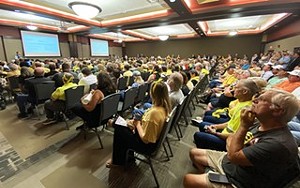
The ICC, which was expected to rule on Navigator’s request early in 2024, dealt a blow to the company’s prospects when ICC case manager Mark Maple wrote in June testimony that the pipeline proposal "is not a benefit to the citizens of Illinois nor in the public interest.”
Maple said the proposal should be denied by the ICC board, in part because of the relatively few easements that Navigator has secured, the pipeline’s unpopularity among the general public and safety concerns.
He also said the state law allowing CO₂ pipelines focuses on their benefit to promote the use of Illinois coal, which isn’t a goal of the Heartland Greenway pipeline.
The state law Maple referenced was enacted by lawmakers in 2011 to assist the now-defunct FutureGen project to capture and sequester CO₂ for a proposed coal-fired power plant in Morgan County.
Kathleen Campbell, a Glenarm resident whose home is near the proposed pipeline route, said it’s obvious Navigator withdrew the application to regroup amid widespread opposition rather than face a denial by the ICC that could delay the project for years.
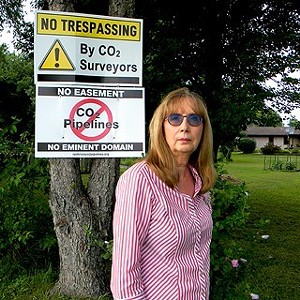
She said the company’s two application withdrawals, and the likelihood of another application being filed, represent Navigator’s “abuse of the process.” State law limits the ICC’s consideration of a pipeline request to an 11-month period.
It’s not fair, and it’s “extremely stressful” for middle-class citizens to be faced with volunteering time and energy for years to fight a wealthy company, said Campbell, vice president of Citizens Against the Heartland Greenway Pipeline.
She joined other opponents in calling for the Illinois General Assembly to pass a moratorium on the approval and construction of any CO₂ pipelines in the state at least until October 2024. That’s when the federal Pipeline and Hazardous Materials Safety Administration is expected to issue updated safety regulations for CO₂ pipelines.






